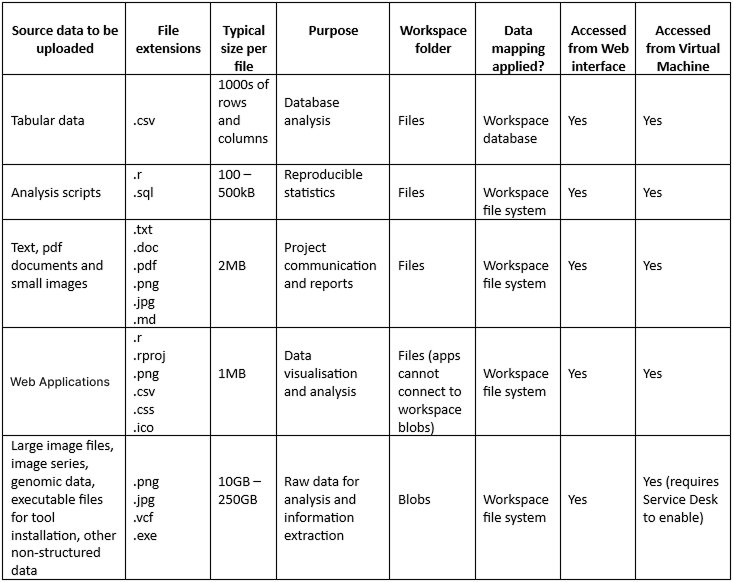Guidance for uploading files
Uploading a lot of files
Your project may have thousands of existing files of diverse types. As you are planning to move your research into the workspace, understanding how the upload process works can help you plan how to do this most effectively. For example, you might consider one of the following approaches:
- The most simple way to upload files is using the workspace web interface. However, if you want to upload data programmatically, you can do so using an API.
- We recommend that you upload no more than 500 files at a time (just as you probably wouldn’t between your desktop and any other shared file server).
- If you have a Virtual Machine add-on to your workspace, using .zip files to batch upload manageable chunks of data is one way to manage this. You will be able to unpack these later in the workspace, and the upload process will be easier.
Upload limits
- Uploads to Files up to 10 GB and to Blobs up to 100 GB have been tested. Larger uploads might also be possible but any network interruption might result in upload failure.
- Generally, files that are larger than 250GB should not be uploaded into the workspace using the methods described. If you have files that are over 250GB, please get in touch with your Data Steward Team who will be able to help plan the data migration.
Guidance
See the table below for a summary of different types of source data, guidance on where to store it, and how you can access the data once it has been uploaded into the workspace.

Updated on November 06, 2025
